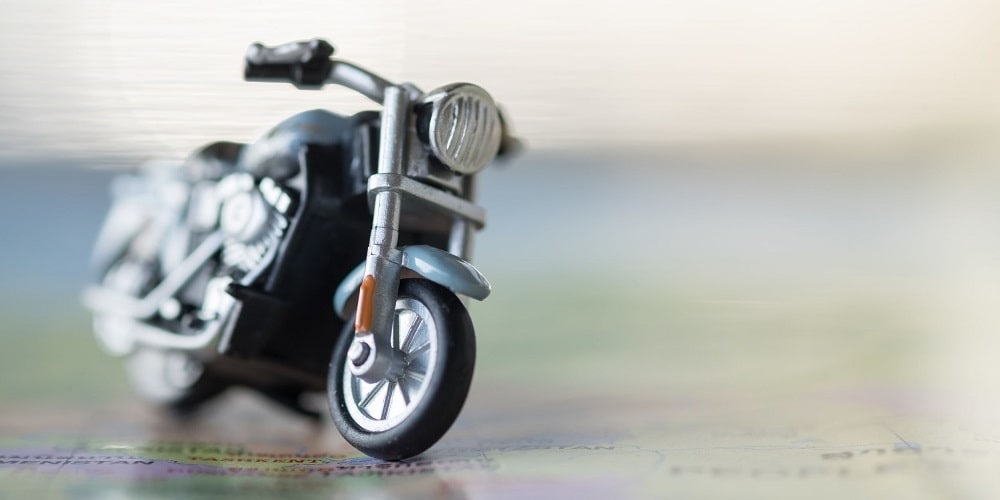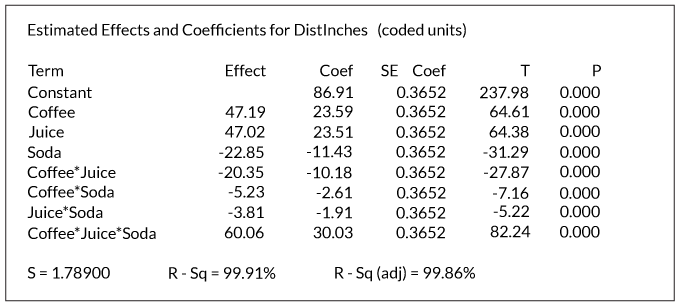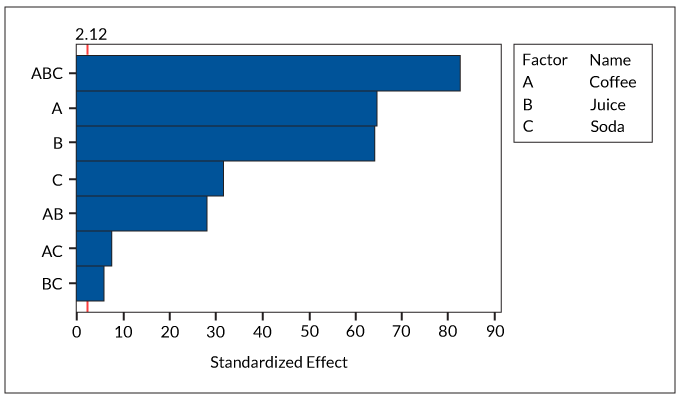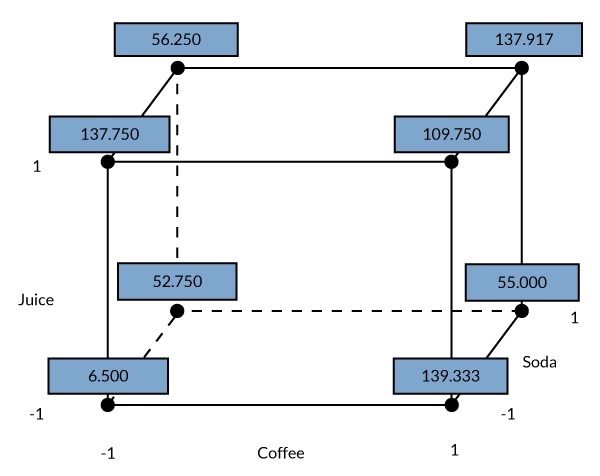
When teaching Design for Six Sigma (DFSS), one of the challenges a company faced was finding a new method for teaching design of experiments (DOE). Some of the trainees had already been through Green Belt and Black Belt DMAIC (Define, Measure, Analyze, Improve, Control) training. As a result, they were familiar with the statapult exercise typically used to teach DOE, and were either bored with the contraption or they already knew what levels to set to reach a given distance.
Cost was also an issue. The company’s program at the time was in pilot mode and the entire budget went to travel expenses. Traditional Six Sigma DOE training aids cost more than $220 each.
The challenge was finding a fun and interactive way of teaching DOE that had the following attributes:
- Cost less than $50.
- Produced consistent results: The results of the paper helicopter exercise were not consistent.
- Transportable: This meant it had to be small enough to fit in suitcases along with clothes.
- Results easy to read: With the statapult exercise, since the ball bounced after it landed, it was tricky measuring exactly where the ball landed.
- Minimum of three factors: It had to have enough factors so full factorial and fractional designs could be taught. Ideal would be an experiment where there was interaction between factors.
The Experiment and Its Objective
The Mattel Corporation under its Hot Wheels brand made a toy called a Formula Fueler. The particular one used in class was a motorcycle. It was chosen it because it came with two fuel tanks and because of its relatively small size.
The motorcycle uses common beverages as its fuel; with the press of the power button, the vehicle races across the floor. The toy manufacturer encourages its owners to experiment with different liquids to see how it affects the motorcycle’s response.
The purpose of the experiment was to determine how three different liquids affected the distance a toy motorcycle traveled. The motorcycle used the liquids as fuel. The toy motorcycle actually ran on three AA batteries, and the liquid acted as a conductor that closed the circuit to the electric motor, which turned the wheels. The distance the motorcycle traveled was related what was in the liquid or mixture-of-liquids. This relationship was determined through a full factorial DOE. (The key ingredient was the amount of salt in the solution. Because salt contains sodium, which has the properties of metal, higher sodium levels lead to better performance.)
Setting Up the Experiment
The items used in the experiment were:
- Formula Fueler motorcycle toy
- Formula Fueler fuel tank
- Three AA batteries
- 25-foot tape measure
- 6-milliliter (ml) syringe (One could reduce setup time with multiple syringes)
- Three cups of different beverages
- Paper towels
- Laptop computer running statistical software
| Table 1: Treatments for Each Observation | |||||||
|
Std Order |
Run Order |
Coffee |
Juice |
Soda |
Coffee (ml) |
Juice (ml) |
Soda (ml) |
|
6 |
1 |
1 |
-1 |
1 |
3 |
0 |
3 |
|
14 |
2 |
1 |
-1 |
1 |
3 |
0 |
3 |
|
8 |
3 |
1 |
1 |
1 |
2 |
2 |
2 |
|
23 |
4 |
-1 |
1 |
1 |
0 |
3 |
3 |
|
17 |
5 |
-1 |
-1 |
-1 |
0 |
0 |
0 |
|
5 |
6 |
-1 |
-1 |
1 |
0 |
0 |
6 |
|
1 |
7 |
-1 |
-1 |
-1 |
0 |
0 |
0 |
|
16 |
8 |
1 |
1 |
1 |
2 |
2 |
2 |
|
15 |
9 |
-1 |
1 |
1 |
0 |
3 |
3 |
|
7 |
10 |
-1 |
1 |
1 |
0 |
3 |
3 |
|
3 |
11 |
-1 |
1 |
-1 |
0 |
6 |
0 |
|
19 |
12 |
-1 |
1 |
-1 |
0 |
6 |
0 |
|
21 |
13 |
-1 |
-1 |
1 |
0 |
0 |
6 |
|
2 |
14 |
1 |
-1 |
-1 |
6 |
0 |
0 |
|
10 |
15 |
1 |
-1 |
-1 |
6 |
0 |
0 |
|
13 |
16 |
-1 |
-1 |
1 |
0 |
0 |
6 |
|
4 |
17 |
1 |
1 |
-1 |
3 |
3 |
0 |
|
11 |
18 |
-1 |
1 |
-1 |
0 |
6 |
0 |
|
9 |
19 |
-1 |
-1 |
-1 |
0 |
0 |
0 |
|
24 |
20 |
1 |
1 |
1 |
2 |
2 |
2 |
|
22 |
21 |
1 |
-1 |
1 |
3 |
0 |
3 |
|
20 |
22 |
1 |
1 |
-1 |
3 |
3 |
0 |
|
12 |
23 |
1 |
1 |
-1 |
3 |
3 |
0 |
|
18 |
24 |
1 |
-1 |
-1 |
6 |
0 |
0 |
It is important to use non-toxic liquids. In other words, only use beverages or mixtures that a person can drink. Not only is this a safe practice, but the fuel tank is the most critical and most vulnerable component of the experiment. Harsh detergents or chemical compounds could weaken the plastic material or cause it to become brittle. If the fuel tank breaks, the whole DOE exercise will be in jeopardy.
Limited by the size of room in which the experiments were to be performed, the response variable could not go beyond 25 feet. This also was the limit on the length of the measuring tape. In order accomplish this. Solutions had to be diluted. If one used coffee and juice in their normal concentration, the toy motorcycle will travel more than 25 feet.
The concentrations used in the experiment were:
- Coffee = one part tap water plus one part coffee
- Juice = two parts tap water plus one part cranberry juice
- Soda = Sprite (no water was added)
It was important to make sure the coffee was not hot because the thermal expansion could break the plastic fuel tank. Adding ice cubes not only diluted it, but cooled it down fast.
Running the Experiment
The response variable was the distance from starting point of the motorcycle to the center of the front tire.
To keep from interfering with the results, the measuring tape was removed from the floor before each run.
Three replicates were run in a 2**3 full factorial design; therefore, there were 24 observations in the experiment. In the experiment, the value of -1 denoted that a particular liquid was not present. A value of 1 meant a particular liquid was added to the fuel tank.
The fuel tank was the most important component of the experiment. It holds the mixture which determines how far or what distance the toy motorcycle will go. The maximum capacity of the fuel tank was 6 milliliters (ml). Therefore, the correct proportions in reference to the experiment were as shown in Table 1.
This experiment can accommodate teams of two to four people. The tasks for each person are allocated in the Table 2 below:
| Table 2: Breaking Up the Tasks Among Team Members | |||
|
Task |
Two People |
Three People |
Four People |
| Pick up motorcycle and remove fuel tank |
Person 1 |
Person 3 |
Person 1 |
| Open cap and pour out the contents in the fuel tank |
Person 1 |
Person 1 |
Person 1 |
| Collect samples of each liquid as specified per observation |
Person 1 |
Person 1 |
Person 2 |
| Pour mixture into fuel tank and close the cap |
Person 1 |
Person 1 |
Person 2 |
| Insert fuel tank into motorcycle |
Person 2 |
Person 1 |
Person 2 |
| Position motorcycle on the floor in starting position |
Person 2 |
Person 2 |
Person 3 |
| Press the power button and wait 2 seconds |
Person 2 |
Person 2 |
Person 3 |
| Watch the vehicle run. Make sure it doesn’t hit anything. | |||
| When the vehicle stops, take a measurement of how far it traveled |
Person 2 |
Person 3 |
Person 1 |
| Enter the results into the laptop (using statistical software) |
Person 2 |
Person 3 |
Person 4 |
Analyzing the Results
The consistency of the results was surprising as indicated in the statistical analysis results (Figure 1). If only in the real world one could achieve correlation coefficients as high as those the students experienced.

The other surprise was that in a 2**3 full factorial DOE all the main effects and interactions were significant. In fact, the three-way interaction seemed to be the most influential factor in the experiment (Figure 2).

The cube plot determined the right settings to reach a given distance (Figure 3).

For example, if the goal was determine to the factors and set the levels so that the motorcycle would travel 110 inches, one would use the following mixture of beverages:
- Juice = 3 ml
- Coffee = 3 ml
- Soda = do not use
Conclusion: Simple, Quick and Inexpensive
The time it took to set-up the experiment was eight minutes. It took 36 minutes to collect 24 observations, and about 10 minutes to analyze the final results. Thus, the recommendation would be to allocate approximately 60 to 90 minutes for this experiment in a Six Sigma classroom setting.
There were three disadvantages or challenges with this experiment:
- Cleanup: It was very difficult not to spill coffee, juice and soda on the floor while performing the exercise.
- Trajectory: The motorcycle used traveled in an arc – it did not follow a straight line. The motorcycle curved to the right, and the longer the distance the more pronounced the arc. Results were best when the toy motorcycle was launched 5 to10 degrees from straight to compensate for the curvature. (Hot Wheels also made a car version of the Formula Fuelers. With four wheels as opposed to two, one might suspect the car would travel in a straighter line.)
- Availability: In 2004 the Mattel stopped producing the Formula Fuelers. The ones used here were bought on an outline auction site.
Overall, the teaching aid met all the needs for a DOE experiment. For instructors who travel a lot, this experiment is ideal. All they have to pack is a tape measure, the motorcycle with the fuel tank attached, and maybe a syringe – a typical textbook takes up more space than these teaching aids. The other materials (e.g., beverages) are usually provided as incidentals of any training session. Since the motorcycle comes to a dead stop, there is no problem measuring the distance. Experience indicates the response was very consistent. And finally, the cost of teaching aids was well below $25 per set.